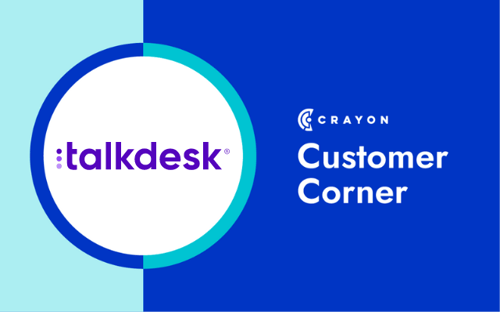It doesn’t matter if you’re building a strategy from scratch or overhauling tired practices established by marketers of yore: Sales enablement shouldn’t be an afterthought. In fact, if you aim to succeed over the long term in a competitive niche, it should be at the forefront of your efforts.
In this post, we’ll discuss the 7 steps to implementing a successful sales enablement strategy, which include:
- Establish measurable goals
- Determine ownership
- Lock down organizational buy in
- Create content
- Ensure accessibility
- Measure success
- Iterate
From there, we’ll dig into three ways you can analyze and optimize your sales enablement strategy, before rounding things out with a shameless plug.
But first…
How do you implement a sales enablement strategy?
Implementing a sales enablement strategy is not for the faint of heart.
It takes significant planning, cross-functional engagement, onboarding of niche tools, and more collateral than you’ve ever dreamed of.
That’s why, in most organizations building out a sales enablement function from the ground up, things start pretty ad-hoc, building collateral by request for individual reps, but eventually reach a breaking point.
From there, systematization is an inevitability.
Sales Enablement Best Practices
In no particular order, these are the key tenets of a killer sales enablement program:
- Ensure alignment between sales cycle and customer journey: Building an SE program for a business that isn’t selling the way its prospects want to buy is like buying flood insurance for a house that’s already underwater. It ain't gonna work. Before you begin building out your sales enablement function in earnest, your organization must align its selling process with the conversion path.
- Don’t go with your gut: Always lean on empirical evidence. Intuition is a valuable jumping off point, but don’t create without data. You’ve only got so much time, you have to make sure you’re getting the most bang for your buck.
- Be prescriptive: Reps need training and tools to help them close, not brain games. The best way to do this is to operationalize the habits and tactics of top performers on your team for others to emulate.
- Leverage technology: The right tools can catalyze adoption and improve the quality of your sales enablement efforts.
- Accessibility over everything: If reps can’t find collateral, they can’t use collateral. If you onboard an expensive tool with a thousand and one killer features that nobody can figure out, it’s useless.
And, of course, no sales enablement program would be complete without a boatload of content (more on that later).
Your Sales Enablement Strategy in 7 Steps
Step #1: Establish measurable goals
Start with why and, perhaps more important, defining what success looks like.
An effective sales enablement strategy is built atop measurable goals (which makes it a lot like, well, any effective strategy).
Common sales enablement KPIs include:
- Competitive win rate
- Average order value / deal size
- SQL to close rate
- Length of sales cycle
- Usage metrics for collateral (like influenced revenue)
Using metrics like these to determine how you’ll gauge the success of your sales enablement program will make it easier to build a sustained competitive advantage because, frankly, you’ll waste less time pursuing educational tactics and building content that doesn’t directly impact rep performance at some stage of the sales cycle.
Step #2: Determine ownership
If you’re here reading this post, it’s safe to assume you’ll have some hand in sales enablement within your organization.
But who else is charged with owning and executing tasks within this function?
One helpful tool you might want to utilize here is the RACI matrix.
RACI stands for Responsible, Accountable, Consulted, Informed. It’s a simple but powerful framework designed to convey the stakeholders on a given project and their varying degrees of responsibility.
In the context of developing a winning sales enablement strategy, it might look something like this:
- Responsible: These are the doers of individual tasks. Maybe this is your dear compatriot charged with crafting a talk track or battlecard.
- Accountable: The delegator. Your role is to ensure everyone else on the team (especially those in the ‘responsible’ bucket) clearly understand expectations and timelines.
- Consulted: They’ve got skin in the game and should be consulted when determining goals and ideal outcomes. These are probably your boots-on-the-ground sales leaders.
- Informed: You’re kept abreast of what's cookin’ but operationally at an arm’s length. This is likely going to be your senior sales/marketing leadership.
Step #3: Lock down organizational buy-in
Enablement requires a certain degree of willingness on the part of your sales organization, but they aren’t the only ones who need to drink the Kool Aid.
Getting folks across your organization to embrace sales enablement is a lot like getting them to adopt competitive intelligence. When we sat down with Gainsight’s Darrin Helsel, Affinity’s Carolyn Klinger, and Apprize360’s Tim Rhodes to talk about this exact topic, they cited the following as the most effective means by which to drive adoption:
- Get aligned with your company’s overarching priorities
- Make friends at all levels of the organization
- Use quick wins to earn trust
- Bring people together
- Use rewards to build momentum
- Be realistic about your bandwidth
If you hope to build a robust program with a lasting impact, you need sales leaders, and organizational leaders, to get onboard the enablement train.
One of the most effective ways to do this is to start small, and with something you know keeps your org’s leaders up at night. Maybe there’s one specific competitor your reps lost a ton of deals to last quarter. Leverage this thorn in their side. Turn a pain point into an opening, focusing your initial sales enablement efforts on this competitor. This will help earn trust by establishing immediate value.
Step #4: Create sales enablement content
Sales enablement content, by definition, makes it easier for reps to close deals (bonus points if, when externally facing, it also improves the prospects’ journey!).
Sales enablement content is essential for the sales team to deliver value, sell faster, and convert more prospects. It can take many different forms. Perhaps the most actionable is the battlecard.
For the uninitiated, here are three of our top battlecard-related resources to help you get started:
- Competitive battlecards 101
- The state of battlecards
- 37 things to include in your competitive battlecards
Step #5: Programmatic distribution and self-serve access
A fundamental component of developing a great sales enablement strategy is ensuring your efforts are accessible a) when they’re most useful b) whenever someone wants.
Once you’ve developed your collateral, you need to make sure to tell your reps why each piece of collateral was created and where each one lives.
Well, it just so happens …
Crayon allows you to empower your sales organization with battlecards, automated alerts, competitive dashboards, and more, arming them with the sales enablement deliverables they need, when they need it.
We probably just should have called step #5 “buy Crayon.”
Step #6: Measure success
Remember those goals established in step #1? Time to revisit them.
Maintaining organizational buy in (across sales and at the executive level) requires results.
Is that battlecard positively impacting competitive win rate? Are reps converting opportunities to revenue in record time thanks to that absolutely FIRE talk track you crafted?
Hopefully! But if the answer is no, it leads us to …
Step #7: Iterate
The “final” step of your winning sales enablement strategy is to make changes based on performance.
While you’re undoubtedly a prodigious talent, there will be times when your strategy falls flat. Some materials will be underutilized, and others will prove ineffective. There will always, in other words, be room for improvement.
This raises two important questions:
- How do you identify where, specifically, there is room for improvement?
- How do you proceed from there?
Which we’ll cover right here…
Analyzing & optimizing your sales enablement content strategy
Just as there’s more than one way to help your sales reps win deals, there’s more than one way to analyze your sales enablement strategy — i.e., to determine where, specifically, you have room for improvement.
Funnel leak analysis
At which stage of the funnel do your prospects tend to drop off? Do they tend to drop off at an early stage or a late stage? Before their first demo or after their first demo?
Answer these questions and you’ll get an idea of where your strategy is lacking. If, for example, your prospects tend to abandon ship before their first demo, you may need to arm your reps with better messaging or train them to conduct more effective discovery calls. If, on the other hand, your prospects tend to abandon ship after their first demo, you may need to arm your reps with better sales decks or train them to more effectively demonstrate your product.
Sales content analysis
Let’s assume, for a moment, that you and your team did an excellent job with the roll-out of your collateral — your reps were beyond excited to put each of the new materials to use.
That’s terrific — and potentially fleeting. If your reps quickly find that certain pieces of collateral are ineffective, they probably won’t return to them very often (if at all).
As such, it’s imperative that you keep track of the rate at which each piece of collateral is used. If one of your battlecards is consistently used at a high rate, you probably don’t need to make any major changes (for now). If, on the other hand, one of your email templates is seldom put to use, it might be wise to give it a refresh.
Maintaining an open dialogue with your reps is extraordinarily important. When it comes to analyzing and optimizing your collateral, qualitative data can be just as informative as quantitative data. If many of your reps say a certain battlecard has improved their confidence on the phones, that’s a useful insight!
Win/loss analysis
At what rate do your sales reps win deals? At what rate do they win competitive deals? When they win, what tends to be the explanation? When they lose, what tends to be the explanation?
These questions are at the heart of win/loss analysis — the process of determining why deals are won or lost. Win/loss analysis is essential for any organization, and it’s particularly useful when trying to determine the strengths and weaknesses of your sales enablement strategy.
Here’s an example: Before you launched your strategy, let’s say your reps won 25% of competitive deals. At that time, the most common explanation for a lost competitive deal was insufficient differentiation — your reps were struggling to communicate the unique value of your product.
Fast forward to six months after the launch of your strategy: Not only is your competitive win rate up to 40%, but now, the most common explanation for a lost competitive deal is pricing. Evidently, your reps are doing a much better job of differentiating your product from the rest of the market — likely an indicator of excellent battlecards!
Hone Your Sales Enablement Content Strategy with Crayon
Sales enablement success depends largely on your strategy. Those who wing it quickly find that they have a low ceiling; those who do it the right way will see positive results for years to come.
Can you do it the right way without following our process to a T? Of course. But if you use the steps we’ve outlined here today as a starting point, you’ll be in fantastic shape to launch the sales enablement strategy you’ve been dreaming about.

Related Blog Posts
Popular Posts
-
 The 8 Free Market Research Tools and Resources You Need to Know
The 8 Free Market Research Tools and Resources You Need to Know
-
 How to Measure Product Launch Success: 12 KPIs You Should Be Tracking
How to Measure Product Launch Success: 12 KPIs You Should Be Tracking
-
 24 Questions to Consider for Your Next SWOT Analysis
24 Questions to Consider for Your Next SWOT Analysis
-
 How to Create a Competitive Matrix (Step-by-Step Guide With Examples + Free Templates)
How to Create a Competitive Matrix (Step-by-Step Guide With Examples + Free Templates)
-
 6 Competitive Advantage Examples From the Real World
6 Competitive Advantage Examples From the Real World





